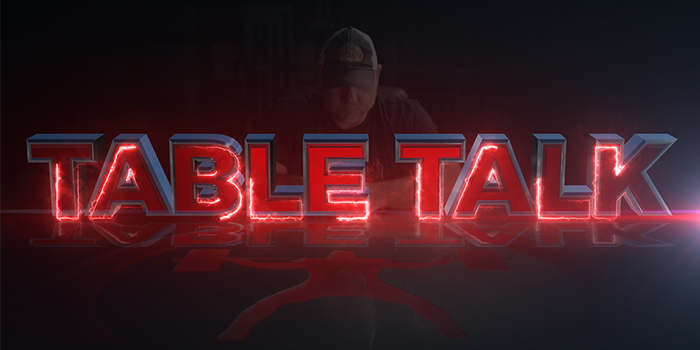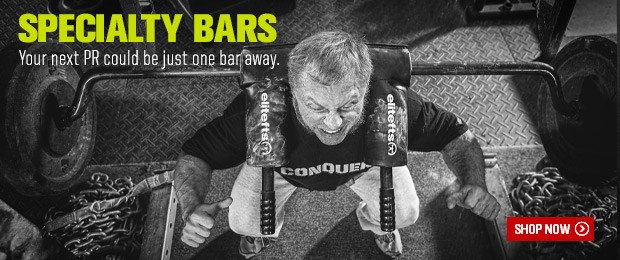
The use of specialty bars is one of the most well-known aspects of a conjugate or Westside training program. It has been proven time after time that intelligent utilization of multiple bars can lead to improvements in the competition lifts and overall strength. Usually, these tools are implemented on max effort training days as variations of the max effort movement. For today's Table Talk, Dave responds to a question about using specialty bars for dynamic effort work as well:
"What are your thoughts on rotating bars weekly for dynamic waves opposed to a present three-week wave? Let's say SS Yoke Bar, cambered bar, bow bar, etc."
Dave begins by pointing out a troublesome issue with alternating bars in this manner: your percentage-based wave can become very skewed. This happens because you are varying percentages each week (50%, 55%, 60% in a three-week wave, for instance) but your max on each bar will be different. Your max with the cambered bar is not going to be the same as your max with the SS Yoke Bar or the straight bar. This means that the weight used is going to change more than if you were using the same bar each week, which leads to greater variation in total workload.
For instance, let's say your plan is to do a three-week wave of dynamic effort work that includes 10 sets of two at 50% for your first session. If your SS Yoke Bar Max is 300 pounds your 50% weight will be 150 pounds. If you chose this bar, your dynamic effort work would be 10 sets of two with 150 pounds for a workload of 3,000 pounds (10 x 2 x 150 = 3,000). In this hypothetical scenario let's also say that your max with the cambered bar is 400 pounds, which would make your 50% weight 200 pounds. If you chose this bar for week one, your dynamic effort work would be 10 sets of two with 200 pounds, which is a 4,000-pound workload (10 x 2 x 200 = 4,000). For those doing the math, that's a 1,000-pound difference in workload just based on your bar selection.
What happens when you try to change bars in the middle of the wave is that your total workload changes drastically. If you're moving from 50% on the first week to 55% on the second week this variation becomes even greater. The result is that total weight lifted for the training session becomes very skewed and can have unintended effects on your training cycle.
However, Dave points out that this principle is actually what makes using different bars for different waves so beneficial. You can choose a SS Yoke Bar for a three-week wave and then a cambered bar for a three-week wave with exactly the same percentages, sets, and reps, but in the resulting training sessions you will perform tremendously different total workloads. At a more advanced level this is how you can strategically build out dynamic training cycles using different bars. If you know how your specialty bar maxes relate to one another, you can determine differences in percentages and the total workloads they will yield. This creates a ton of interesting opportunities with programming.
So, to answer the question directly, Dave says that changing bars every week for dynamic work does not make sense in a waved program, but you can certainly utilize specialty bars in successive dynamic effort waves to create profound training effects.










